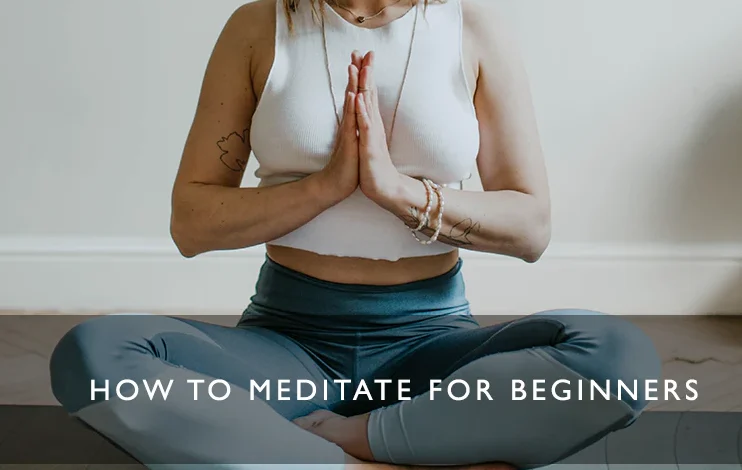How to Meditate: ultimate guide

Discover the Secrets to Meditate effectively Today
Unlock the secrets of meditation with our expert guide. Discover effective techniques to how to meditate
Are you feeling overwhelmed, stressed, or simply searching for inner peace? Meditation might be the answer you’ve been looking for. how to meditate. This ancient practice, once shrouded in mystery, has now become a powerful tool for millions seeking balance in their hectic lives.
But where do you start? The world of meditation can seem daunting, with countless techniques, philosophies, and apps vying for your attention. Don’t worry – we’ve got you covered. In this comprehensive guide, we’ll take you on a journey from meditation novice to mindfulness master.
How to meditate. You’ll learn everything from creating the perfect zen space to overcoming common hurdles, and even how to leverage technology to enhance your practice.
Ready to embark on a transformative adventure? Let’s dive into the seven essential steps that will help you unlock the life-changing benefits of meditation. how to meditate. Whether you’re looking to reduce stress, improve focus, or simply find a moment of calm in your day, this guide will equip you with all the tools you need to start and sustain a rewarding meditation practice.

Understanding Meditation Basics
A. Definition and purpose of meditation
Meditation is a practice that involves focusing the mind to achieve a state of calm, clarity, and heightened awareness. Its primary purpose is to cultivate mental and emotional well-being, reduce stress, and promote inner peace. By training the mind to be present and attentive, meditation helps individuals develop a deeper understanding of themselves and their surroundings.
B. Different types of meditation practices
How to meditate. There are various meditation techniques, each with its unique approach and benefits. Here’s a comparison of some popular practices:
| Meditation Type | Focus | Key Benefits |
|---|---|---|
| Mindfulness | Present moment awareness | Stress reduction, improved focus |
| Transcendental | Mantra repetition | Relaxation, creativity enhancement |
| Loving-kindness | Cultivating compassion | Improved relationships, empathy |
| Body scan | Physical sensations | Tension release, body awareness |
| Zen | Breath and posture | Mental clarity, discipline |
C. Benefits of regular meditation
Regular meditation practice offers numerous advantages for both mental and physical health:
- Reduced stress and anxiety
- Improved emotional regulation
- Enhanced focus and concentration
- Better sleep quality
- Increased self-awareness
- Lower blood pressure
- Boosted immune system function
How to meditate. By understanding these basics, you’re well-equipped to begin your meditation journey. Next, we’ll explore how to create the perfect meditation space to support your practice.
Creating the Perfect Meditation Space
Now that we understand the basics of meditation, let’s focus on creating an ideal environment for your practice. A well-designed meditation space can significantly enhance your experience and help you achieve a deeper state of relaxation.
A. Choosing a quiet, comfortable location
Select a spot in your home that’s free from distractions and noise. This could be a spare room, a corner of your bedroom, or even a quiet outdoor area. Ensure the space is comfortable and allows you to sit or lie down without discomfort.
B. Essential items for your meditation area
| Item | Purpose |
|---|---|
| Cushion or mat | Provides comfort during seated meditation |
| Blanket | Offers warmth and coziness |
| Timer | Helps track meditation duration |
| Journal | Records thoughts and experiences |
C. Setting the right ambiance
Create a calming atmosphere with these elements:
- Soft lighting (e.g., dimmed lamps or candles)
- Soothing colors (blues, greens, or neutrals)
- Natural elements (plants, stones, or water features)
- Aromatherapy (incense or essential oils)
By carefully designing your meditation space, you’ll create a sanctuary that invites relaxation and mindfulness. how to meditate. This dedicated area will serve as a visual and physical reminder of your commitment to your practice. As we move forward, we’ll explore how to prepare your mind and body for a successful meditation session.
Preparing Your Mind and Body
Selecting the best time to meditate
Choosing the right time for meditation can significantly impact your practice. Many find early morning or evening most effective, how to meditate but the best time is when you’re least likely to be interrupted. Experiment with different times to discover what works best for you.
Proper posture and breathing techniques
Maintaining a comfortable yet alert posture is crucial for effective meditation. Here’s a quick guide:
- Sit with a straight spine
- Keep shoulders relaxed
- Rest hands on your lap or knees
- Close eyes or maintain a soft gaze
Proper breathing is equally important. Focus on deep, diaphragmatic breaths:
| Breathing Phase | Duration | Action |
|---|---|---|
| Inhale | 4 counts | Expand belly |
| Hold | 2 counts | Maintain expansion |
| Exhale | 6 counts | Contract belly |
Dealing with distractions
Distractions are normal, especially for beginners. Instead of fighting them:
- Acknowledge the distraction
- Gently redirect focus to your breath
- Use a mental label for recurring thoughts
- Practice patience with yourself
Setting realistic expectations
Remember, meditation is a skill that improves with practice. Set achievable goals:
- Start with short sessions (5-10 minutes)
- Gradually increase duration
- Focus on consistency rather than perfection
- Embrace the process, not just the outcome
how to meditate. With these foundations in place, you’re ready to begin your meditation journey. The next section will guide you through a step-by-step meditation process tailored for beginners.
Table of Contents
Step-by-Step Meditation Guide for Beginners
Now that you’ve prepared your mind and body, let’s dive into a practical guide for beginners to start meditating effectively.
A. Starting with Short Sessions
Begin your meditation journey with brief 5-10 minute sessions. This helps build consistency and prevents overwhelming yourself. Gradually increase the duration as you become more comfortable.
B. Focusing on Your Breath
Concentrate on your natural breathing pattern. This simple technique anchors your mind to the present moment.
| Breathing Technique | Description |
|---|---|
| Belly Breathing | Focus on the rise and fall of your abdomen |
| Counting Breaths | Count each inhale and exhale up to 10, then restart |
| 4-7-8 Technique | Inhale for 4 counts, hold for 7, exhale for 8 |
C. Acknowledging and Releasing Thoughts
As thoughts arise:
- Notice them without judgment
- Gently return your focus to your breath
- Avoid getting frustrated; mind-wandering is normal
D. Using Guided Meditations
Guided meditations can be incredibly helpful for beginners. They provide structure and help maintain focus throughout the session.
E. Incorporating Mantras or Visualizations
Experiment with these techniques to find what resonates with you:
- Repeat a calming phrase or word
- Visualize a peaceful scene or object
- Use body scan techniques to promote relaxation
Remember, consistency is key in developing a meditation practice. Start small, be patient with yourself, and gradually expand your practice as you become more comfortable with the techniques.
Advancing Your Meditation Practice

How to meditate. Now that you’ve established a solid foundation in meditation, it’s time to take your practice to the next level. Advancing your meditation practice involves several key strategies that can deepen your experience and enhance the benefits you receive.
Increasing session duration gradually
To progress in your meditation journey, how to meditate. gradually extending your session length is crucial. Here’s a simple guide to help you increase your meditation time:
| Week | Session Duration |
|---|---|
| 1-2 | 10-15 minutes |
| 3-4 | 15-20 minutes |
| 5-6 | 20-25 minutes |
| 7-8 | 25-30 minutes |
Remember, consistency is more important than duration. It’s better to meditate for shorter periods regularly than to have sporadic longer sessions.
Exploring different meditation styles
As you advance, experimenting with various meditation techniques can broaden your practice:
- Mindfulness meditation
- Loving-kindness meditation
- Transcendental meditation
- Zen meditation
- Vipassana meditation
Each style offers unique benefits and can help you discover what resonates best with you.
Integrating mindfulness into daily life
Extending your practice beyond formal meditation sessions is a powerful way to advance. Try these methods to incorporate mindfulness into your daily routine:
- Mindful eating: Pay attention to the flavors, textures, and sensations of each bite.
- Mindful walking: Focus on each step, the feeling of your feet touching the ground.
- Mindful listening: Give your full attention when conversing with others.
- Mindful breathing: Take short breaks throughout the day to focus on your breath.
Joining meditation groups or retreats
Connecting with others on the same path can significantly enhance your practice. Consider:
- Joining local meditation groups for regular practice and discussion
- Attending meditation workshops to learn from experienced practitioners
- Participating in meditation retreats for intensive, immersive experiences
These activities can provide valuable insights, motivation, and a sense of community as you advance in your meditation journey.
Overcoming Common Meditation Challenges
Dealing with restlessness and boredom
Restlessness and boredom are common hurdles in meditation. To combat these:
- Focus on your breath: Count inhales and exhales
- Use guided meditations to maintain engagement
- Experiment with different meditation techniques
Managing intrusive thoughts
Intrusive thoughts are natural, but they can be distracting. Try these strategies:
- Acknowledge thoughts without judgment
- Visualize thoughts as clouds passing by
- Practice labeling thoughts (e.g., “planning,” “worrying”)
Staying consistent with your practice
Consistency is key for reaping meditation benefits. Here’s how to maintain it:
- Set a regular schedule
- Start with short sessions and gradually increase
- Use meditation apps for reminders and tracking
Addressing physical discomfort
Physical discomfort can hinder meditation. Address it with these tips:
| Issue | Solution |
|---|---|
| Back pain | Use a meditation cushion or chair |
| Leg numbness | Try different postures (e.g., seated, lying down) |
| Fidgeting | Practice progressive muscle relaxation |
Remember, these challenges are normal and part of the learning process. With patience and persistence, you’ll develop a more stable and rewarding meditation practice. how to meditate. As you overcome these obstacles, you’ll be ready to explore ways to enhance your meditation experience, which we’ll discuss in the next section.
Enhancing Your Meditation with Technology
In today’s digital age, technology can be a powerful ally in your meditation journey. how to meditate. Let’s explore how various tech tools can elevate your practice.
Meditation Apps and Their Features
Meditation apps have revolutionized the way we approach mindfulness. Here’s a comparison of popular apps and their key features:
| App Name | Key Features | Subscription |
|---|---|---|
| Headspace | Guided meditations, sleep sounds, focus music | Paid |
| Calm | Daily meditations, sleep stories, breathing exercises | Paid |
| Insight Timer | Largest free library, timer with interval bells | Free/Paid |
These apps offer structured programs, progress tracking, and reminders to help you maintain consistency in your practice.
Using Biofeedback Devices
Biofeedback devices provide real-time data on your physiological state, helping you understand and improve your meditation:
- Heart rate variability (HRV) monitors
- EEG headbands for brainwave tracking
- Respiration sensors
By visualizing your body’s responses, you can fine-tune your technique and achieve deeper states of relaxation.
Virtual Reality Meditation Experiences
Virtual reality (VR) offers immersive meditation environments that can transport you to serene landscapes or abstract realms. Benefits include:
- Enhanced focus by blocking out real-world distractions
- Guided visualizations in 360-degree environments
- Interactive meditation exercises
As we explore these technological enhancements, it’s important to remember that they are tools to support your practice, not replace the core principles of meditation.

CONCLUTION
These challenges that arise during meditation are a natural and expected part of the learning process. They are not something to be feared or seen as roadblocks, but rather opportunities for growth and development.
It’s important to understand that every meditation practitioner, regardless of their experience level, will encounter various difficulties and obstacles along the way. This is simply the nature of the practice. With patience, compassion, and a willingness to persevere, you’ll be able to work through these challenges and develop a more stable, rewarding, and fulfilling meditation practice over time.
The key is to approach each obstacle with a spirit of openness and curiosity, rather than judgment or frustration. how to meditate. See each challenge as a chance to deepen your understanding of your own mind and learn more about the nuances of the meditative process.






